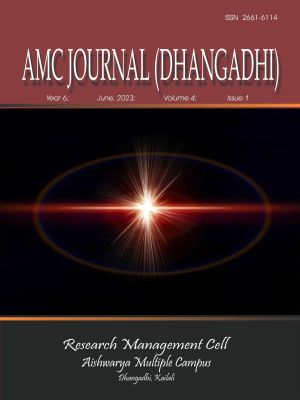Causes and Consequences of Teenage Marriage Among Dalit Teenagers
DOI:
https://doi.org/10.3126/amcjd.v4i1.58828Keywords:
Dalit women, cause, impact, teenage marriageAbstract
The study seeks to identify the different causes and its consequences women's health. The study is based on quantitative research design. To achieve the devised objectives of the study, the researcher has selected 90 respondents from Barbardiya Municipality using purposive sampling method. The data was collected from primary source. The only tool for collecting data was semi structured interview schedule. The collected data was coded, edited and proceed manually. Number and percent were major statistics measures used in analyzing and interpreting the data. Out of 90 respondents i.e. sample population 61.11 percent respondents are illiterate. It is also found that 64.66 percent respondents got married between the ages of 15-19 years. 60 percent women became pregnant within one year after the marriage. Likewise, 19.33 percent respondent did not checkup their health during pregnancy. Most of the respondents have involved in agriculture. 58.88 percent respondents belong to joint family. The most of respondents, 66.66 percent got teenage marriage because of their parent's decision. Most of the respondents have knowledge about family planning devices. 38.88 percent respondents used family planning devices. In this study area, most of respondents (45%) have more than two children. Likewise, 68.81 percent respondents suffered from miscarriage due to teen age marriage. 82.22 percent respondents’ place of delivery was at home. In conclusion, it was found that the main cause of early marriage has lack of education, tradition, socio-economic condition, poverty.




